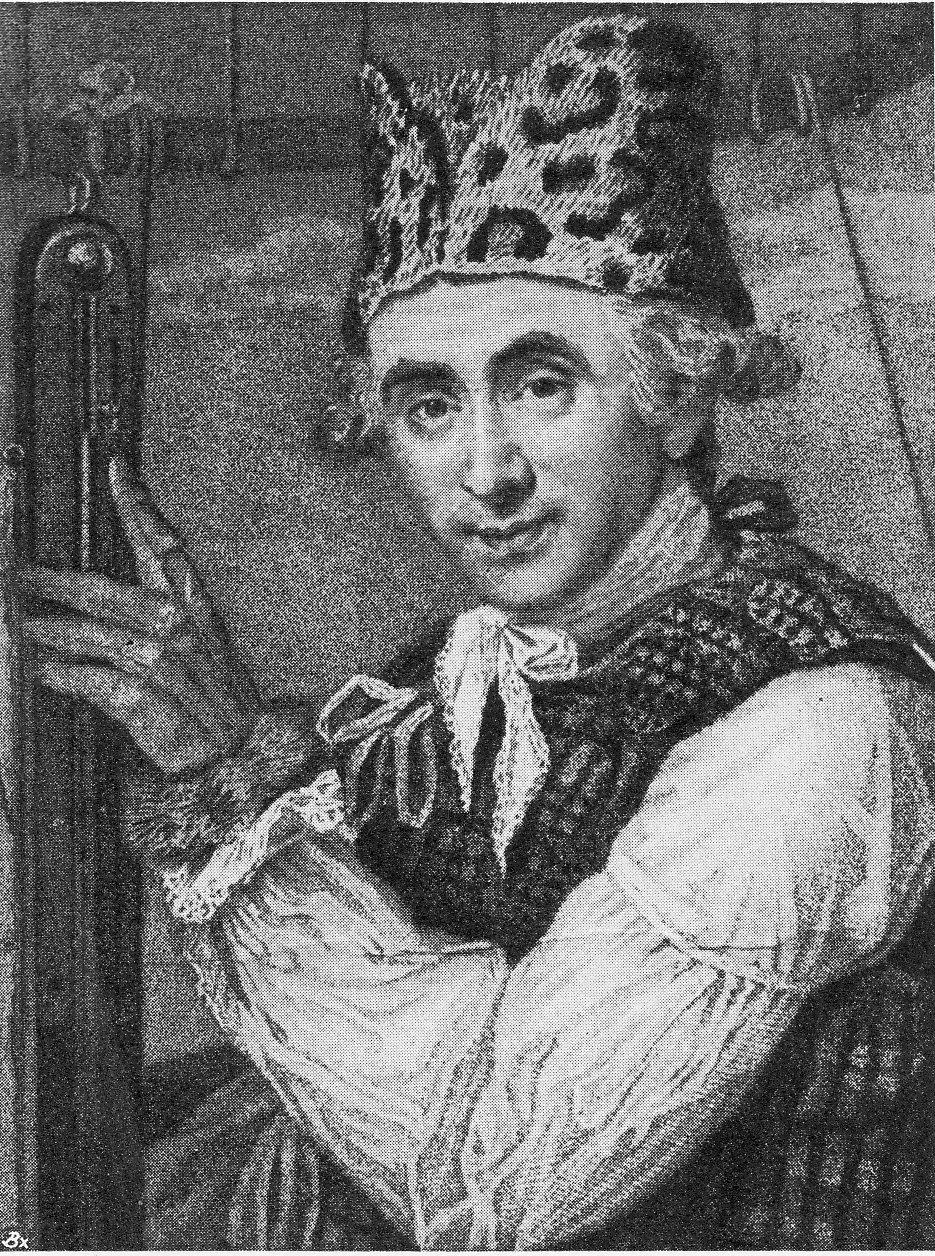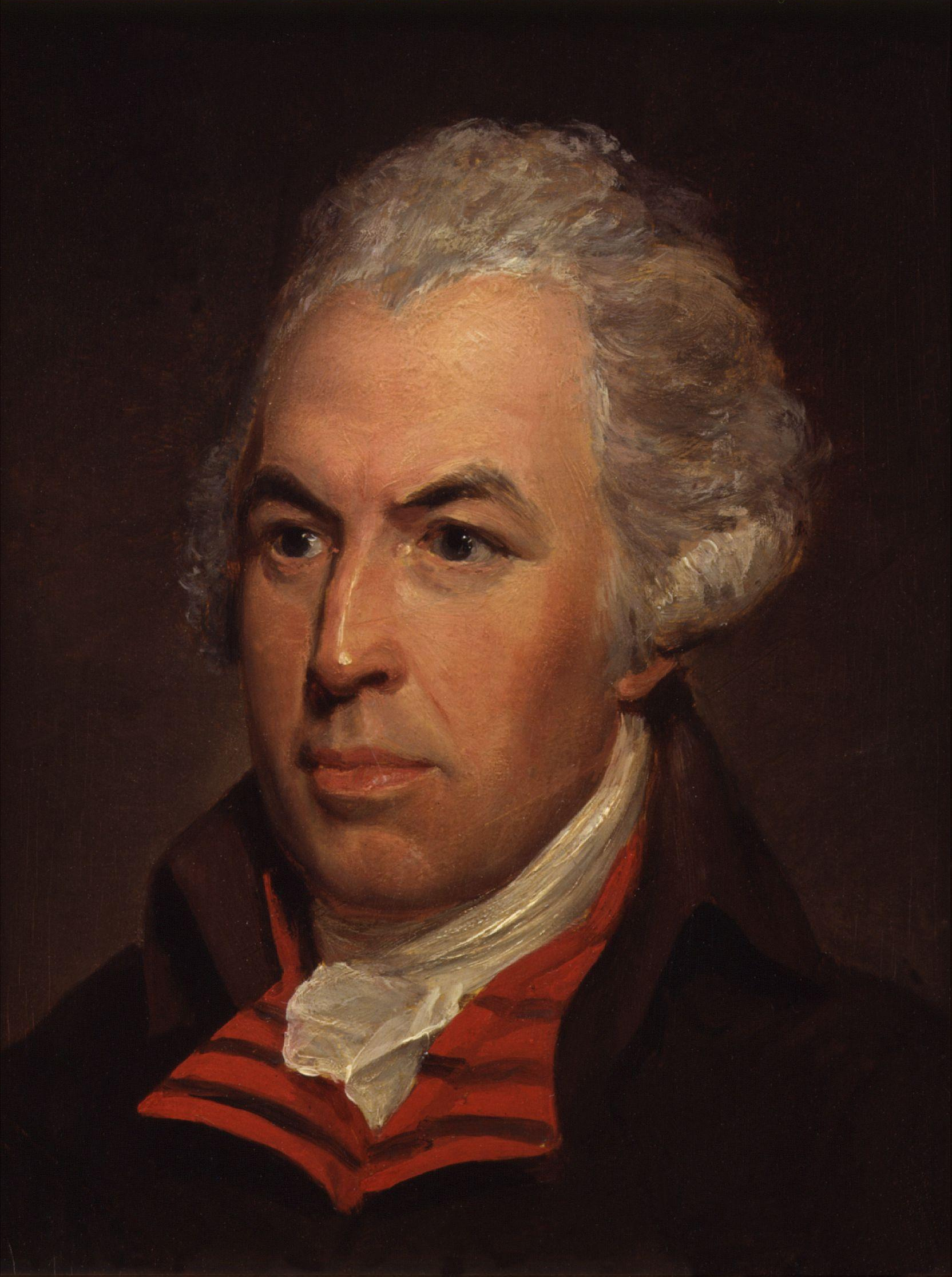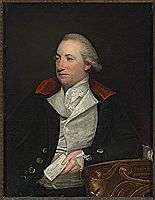|
Caroline Watson
Caroline Watson (1761?–1814) was an English stipple engraver. Life The daughter of the Irish engraver James Watson (engraver), James Watson, she was born in London in 1760 or 1761, and studied under her father, who worked in mezzotint. She was known for her skilled worked in the stipple method, was particularly known for reproductions of miniatures, and was the only woman engraver to serve as an independent engraver in the British 18th century. She came to prominence as an engraver at about the same time as women began to make up a significant proportion print consumers. Her career began to wind down after 1810 due to ill health, and she died at Pimlico on 10 June 1814. Works Watson's plates were numerous. In 1784 she engraved a portrait of Prince William Henry, Duke of Gloucester and Edinburgh, Prince William of Gloucester, after Joshua Reynolds, and in 1785 a pair of small plates of the Princesses Sophia and Mary, after John Hoppner, which she dedicated to Charlotte of Meckle ... [...More Info...] [...Related Items...] OR: [Wikipedia] [Google] [Baidu] |
Stipple Engraver
Stipple engraving is a technique used to create tone in an intaglio print by distributing a pattern of dots of various sizes and densities across the image. The pattern is created on the printing plate either in engraving by gouging out the dots with a burin, or through an etching process. Stippling was used as an adjunct to conventional line engraving and etching for over two centuries, before being developed as a distinct technique in the mid-18th century. The technique allows for subtle tonal variations and is especially suitable for reproducing chalk drawings. Early history Stipple effects were used in conjunction with other engraving techniques by artists as early as Giulio Campagnola (c.1482 – c. 1515) and Ottavio Leoni (1578–1630), although some of Campagnola's small prints were almost entirely in stipple. In Holland in the seventeenth century, the printmaker and goldsmith Jan Lutma developed an engraving technique, known as ''opus mallei'', in which the dots are pu ... [...More Info...] [...Related Items...] OR: [Wikipedia] [Google] [Baidu] |
William Hayley
William Hayley (9 November 174512 November 1820) was an English writer, best known as the biographer of his friend William Cowper. Biography Born at Chichester, he was sent to Eton College, Eton in 1757, and to Trinity Hall, Cambridge, in 1762; his connection with the Middle Temple, London, where he was admitted in 1766, was merely nominal. In 1767 he left Cambridge and went to live in London. His private means enabled Hayley to live on his patrimonial estate at Eartham, Sussex, and he retired there in 1774. The location of this house in Eartham is now occupied by the Great Ballard School. So great was Hayley's fame that on Thomas Warton's death in 1790 he was offered the Poet Laureate, laureateship, which he refused. In 1792, while writing the ''Life'' of John Milton, Milton, Hayley made Cowper's acquaintance. A warm friendship sprang up between the two which lasted till Cowper's death in 1800. Hayley indeed was mainly instrumental in getting Cowper his pension. In 1800 Hayle ... [...More Info...] [...Related Items...] OR: [Wikipedia] [Google] [Baidu] |
English Engravers
English usually refers to: * English language * English people English may also refer to: Peoples, culture, and language * ''English'', an adjective for something of, from, or related to England ** English national identity, an identity and common culture ** English language in England, a variant of the English language spoken in England * English languages (other) * English studies, the study of English language and literature * ''English'', an Amish term for non-Amish, regardless of ethnicity Individuals * English (surname), a list of notable people with the surname ''English'' * People with the given name ** English McConnell (1882–1928), Irish footballer ** English Fisher (1928–2011), American boxing coach ** English Gardner (b. 1992), American track and field sprinter Places United States * English, Indiana, a town * English, Kentucky, an unincorporated community * English, Brazoria County, Texas, an unincorporated community * Engli ... [...More Info...] [...Related Items...] OR: [Wikipedia] [Google] [Baidu] |
Artists From London
An artist is a person engaged in an activity related to creating art, practicing the arts, or demonstrating an art. The common usage in both everyday speech and academic discourse refers to a practitioner in the visual arts only. However, the term is also often used in the entertainment business, especially in a business context, for musicians and other performers (although less often for actors). "Artiste" (French for artist) is a variant used in English in this context, but this use has become rare. Use of the term "artist" to describe writers is valid, but less common, and mostly restricted to contexts like used in criticism. Dictionary definitions The ''Oxford English Dictionary'' defines the older broad meanings of the term "artist": * A learned person or Master of Arts. * One who pursues a practical science, traditionally medicine, astrology, alchemy, chemistry. * A follower of a pursuit in which skill comes by study or practice. * A follower of a manual art, such as a m ... [...More Info...] [...Related Items...] OR: [Wikipedia] [Google] [Baidu] |
18th-century English Women Artists
The 18th century lasted from January 1, 1701 ( MDCCI) to December 31, 1800 ( MDCCC). During the 18th century, elements of Enlightenment thinking culminated in the American, French, and Haitian Revolutions. During the century, slave trading and human trafficking expanded across the shores of the Atlantic, while declining in Russia, China, and Korea. Revolutions began to challenge the legitimacy of monarchical and aristocratic power structures, including the structures and beliefs that supported slavery. The Industrial Revolution began during mid-century, leading to radical changes in human society and the environment. Western historians have occasionally defined the 18th century otherwise for the purposes of their work. For example, the "short" 18th century may be defined as 1715–1789, denoting the period of time between the death of Louis XIV of France and the start of the French Revolution, with an emphasis on directly interconnected events. To historians who expand ... [...More Info...] [...Related Items...] OR: [Wikipedia] [Google] [Baidu] |
18th-century Engravers
The 18th century lasted from January 1, 1701 ( MDCCI) to December 31, 1800 ( MDCCC). During the 18th century, elements of Enlightenment thinking culminated in the American, French, and Haitian Revolutions. During the century, slave trading and human trafficking expanded across the shores of the Atlantic, while declining in Russia, China, and Korea. Revolutions began to challenge the legitimacy of monarchical and aristocratic power structures, including the structures and beliefs that supported slavery. The Industrial Revolution began during mid-century, leading to radical changes in human society and the environment. Western historians have occasionally defined the 18th century otherwise for the purposes of their work. For example, the "short" 18th century may be defined as 1715–1789, denoting the period of time between the death of Louis XIV of France and the start of the French Revolution, with an emphasis on directly interconnected events. To historians who expand ... [...More Info...] [...Related Items...] OR: [Wikipedia] [Google] [Baidu] |
1814 Deaths
Events January * January 1 – War of the Sixth Coalition – The Royal Prussian Army led by Gebhard Leberecht von Blücher crosses the Rhine. * January 3 ** War of the Sixth Coalition – Siege of Cattaro: French garrison surrenders to the British after ten days of bombardment. ** War of the Sixth Coalition – Siege of Metz: Allied armies lay siege to the French city and fortress of Metz. * January 5 – Mexican War of Independence – Battle of Puruarán: Spanish Royalists defeat Mexican Rebels. * January 11 – War of the Sixth Coalition – Battle of Hoogstraten: Prussian forces under Friedrich Wilhelm Freiherr von Bülow defeat the French. * January 14 ** Treaty of Kiel: Frederick VI of Denmark cedes the Kingdom of Norway into personal union with Sweden, in exchange for west Pomerania. This marks the end of the real union of Denmark-Norway. ** War of the Sixth Coalition – Siege of Antwerp: Allied forces besiege French Ant ... [...More Info...] [...Related Items...] OR: [Wikipedia] [Google] [Baidu] |
1761 Births
Events January–March * January 14 – Third Battle of Panipat: Ahmad Shah Durrani and his coalition decisively defeat the Maratha Confederacy, and restore the Mughal Empire to Shah Alam II. * January 16 – Siege of Pondicherry (1760) ended: The British capture Pondichéry, India from the French. * February 8 – An earthquake in London breaks chimneys in Limehouse and Poplar. * March 8 – A second earthquake occurs in North London, Hampstead and Highgate. * March 31 – 1761 Portugal earthquake: A magnitude 8.5 earthquake strikes Lisbon, Portugal, with effects felt as far north as Scotland. April–June * April 1 – The Austrian Empire and the Russian Empire sign a new treaty of alliance. * April 4 – A severe epidemic of influenza breaks out in London and "practically the entire population of the city" is afflicted; particularly contagious to pregnant women, the disease causes an unusual number of miscarriages and prema ... [...More Info...] [...Related Items...] OR: [Wikipedia] [Google] [Baidu] |
John Stuart, 1st Marquess Of Bute
John Stuart, 1st Marquess of Bute PC, FRS (30 June 1744 – 16 November 1814), styled Lord Mount Stuart until 1792 and known as The Earl of Bute between 1792 and 1794, was a British nobleman, coalfield owner, diplomat and politician who sat in the House of Commons from 1766 to 1776. Early life Stuart was born at Mount Stuart House on the Isle of Bute, the son of prime minister John Stuart, 3rd Earl of Bute, and his wife Mary Wortley Montagu. He was educated at Harrow School and Winchester College. He went to the University of Oxford, where he had private tuition from James Bladen. The degree of D.C.L., awarded to him by the university in 1793, was honorary. Around 1757 Stuart began to be tutored by the philosopher Adam Ferguson. Political career Lord Mount Stuart was returned as Tory Member of Parliament for Bossiney at a by-election in 1766. He was returned in the general elections of 1768 and 1774. On 2 November 1775 he announced in the House of Commons his intention to i ... [...More Info...] [...Related Items...] OR: [Wikipedia] [Google] [Baidu] |
Maria Cosway
Maria Luisa Caterina Cecilia Cosway (ma-RYE-ah; née Hadfield; 11 June 1760 – 5 January 1838) was an Italian-English painter, musician, and educator. She worked in England, in France, and later in Italy, cultivating a large circle of friends and clients, mainly as an initiate of Swedish and French Illuminism, and an enthusiastic revivalist of the Masonic Knights Templar. She exhibited at the Royal Academy of Arts, and commissioned the first portrait of Napoleon to be seen in England. Her paintings and engravings are held by the British Museum, the British Library, and the New York Public Library. Her work was included in London exhibitions at the National Portrait Gallery in 1995–96 and Tate Britain in 2006. Cosway was an accomplished composer, musician, and society hostess with her husband, painter Richard Cosway. She had a brief romantic relationship with the widowed American statesman Thomas Jefferson in 1786 while he served in Paris as the envoy to France; the pair kep ... [...More Info...] [...Related Items...] OR: [Wikipedia] [Google] [Baidu] |
Aquatint
Aquatint is an intaglio printmaking technique, a variant of etching that produces areas of tone rather than lines. For this reason it has mostly been used in conjunction with etching, to give both lines and shaded tone. It has also been used historically to print in colour, both by printing with multiple plates in different colours, and by making monochrome prints that were then hand-coloured with watercolour. It has been in regular use since the later 18th century, and was most widely used between about 1770 and 1830, when it was used both for artistic prints and decorative ones. After about 1830 it lost ground to lithography and other techniques. There have been periodic revivals among artists since then. An aquatint plate wears out relatively quickly, and is less easily reworked than other intaglio plates. Many of Goya's plates were reprinted too often posthumously, giving very poor impressions. Among the most famous prints using the aquatint technique are the major serie ... [...More Info...] [...Related Items...] OR: [Wikipedia] [Google] [Baidu] |
Francis Wheatley (painter)
Francis Wheatley RA (174728 June 1801) was an English portrait and landscape painter. Life and work Wheatley was born at Wild Court, Covent Garden, London, the son of a master tailor. He studied at William Shipley's drawing school and the Royal Academy, and won several prizes from the Society of Arts. He assisted in the decoration of Vauxhall, and aided John Hamilton Mortimer in painting a ceiling for Lord Melbourne at Brocket Hall in Hertfordshire. In his youth, he lived a dissipated life. He first exhibited at the Royal Academy in 1778, built up a good practice and was praised by the critics. But he fell in with extravagant company and was forced to flee his creditors: so he eloped to Ireland with Elizabeth Gresse, wife of a fellow artist John Alexander Gresse (1741–1794). In the summer of 1779 he was in Dublin with Elizabeth, whom he passed off as his wife, and established himself there as a portrait-painter, executing, among other works, the best-known interior of the ... [...More Info...] [...Related Items...] OR: [Wikipedia] [Google] [Baidu] |








